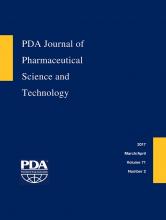A high-quality drug is generally considered one that is free of contamination and that reliably delivers to the patient the therapeutic benefit as promised on the product label. When patients go to a local pharmacy, they do not inspect individual pills or vials to select the highest quality medicines, like they might do when buying products at the supermarket. Patients implicitly expect the medicine to be of high quality and that it will perform as indicated on the product label every time they take it.
Today's medicines are often the result of intense, cutting-edge basic and clinical research. But alarmingly, drug development globally has tended not to resource the same laboratory-based research and development intensity into pharmaceutical/biopharmaceutical manufacturing as has been placed on drug research and discovery. The manufacture and testing of medicines continues to rely too often on decade(s)-old technologies. Many of the problems that we have seen in drug quality in recent years, including high rates of drug product recalls and shortages, reflect the use of antiquated manufacturing designs and processes. American patients, who face life-threatening conditions such as cancer, infectious disease, and metabolic disorders, suffer enormously when adequate medication runs in short supply.
Within the FDA Center for Drug Evaluation and Research (CDER), the Office of Pharmaceutical Quality (OPQ) oversees several programs to ensure that pharmaceutical products are consistently designed and manufactured to meet patient expectations of drug quality. Recognizing that drug shortages, supply disruptions, and other routes to quality failure might often be overcome through advanced technologies, OPQ seeks to facilitate the modernization of pharmaceutical manufacturing. Modern manufacturing technologies have revolutionized other industrial sectors (e.g., electronics and chemicals), and strategic implementation of these technologies in the pharmaceutical industry could well lead to more robust drug manufacturing processes, with fewer interruptions, fewer product failures, and greater assurance that pharmaceutical products manufactured will consistently provide the expected clinical performance. Many technologies also have the potential to increase drug production flexibility and provide scalable response capacity capable of forestalling drug shortages or pandemics.
OPQ understands that the implementation of innovative manufacturing technologies, although desirable and profitable in the long term, may expose companies in the short term with a variety of uncertainties. And for this reason, OPQ is determined that regulatory agility is warranted to facilitate—and not hinder—company efforts to adopt novel or otherwise unfamiliar technologies. OPQ has established its Emerging Technology Program featured by the multidisciplinary Emerging Technology Team (ETT), as described in the draft guidance for industry entitled Advancement of Emerging Technology Applications To Modernize the Pharmaceutical Manufacturing Base, to serve as a vehicle for early FDA–sponsor engagement, fostering open communication between the FDA and companies interested in introducing modernizing technologies. The draft guidance can be accessed at https://www.fda.gov/downloads/drugs/guidancecomplianceregulatoryinformation/guidances/ucm478821.pdf. Through early engagement and ongoing communication, the ETT will facilitate the development and regulatory assessment of novel manufacturing technologies by proactively identifying and resolving potential scientific and policy issues. The goal of the draft guidance is to provide clarity on the Emerging Technology Program and regulatory process to manufacturers, so that modernization efforts will bring high-quality drug products to market as quickly as possible, without regulatory delays.
The Emerging Technology Program provides an opportunity, to the benefit of American patients, for companies to accelerate the modernization of pharmaceutical manufacturing. The adoption of innovative manufacturing technologies helps to prevent the types of drug shortages that we have witnessed in recent years. Beyond this, the program may also spark a reinvigoration of our country's pharmaceutical manufacturing sector and health care mission.
- © PDA, Inc. 2017






